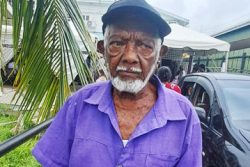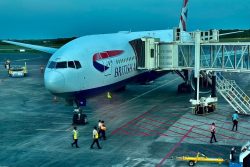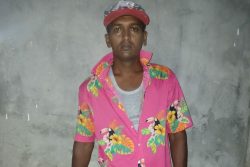A four-member team of legislators from the Legislative Assembly of the State of Roraima in Brazil have indicated interest in investing in livestock farming, the production of yogurt, and acquiring lands in the Rupununi and intermediate savannahs to pursue these ventures.
Meanwhile, Minister of Agricul-ture Robert Persaud has disclosed that Guyana has available for cattle rearing in the Rupununi some 50,000 acres of land for which joint development is also being encouraged.
At a meeting with Persaud in the boardroom of the Ministry of Agriculture last week the team led by State Deputy Remidio Monai Montessi and accompanied by Brazil’s Ambassador to Guyana Arthur Meyer also indicated their interest in acquiring lands in Guyana for cattle rearing.
The four were part of a larger group of ten Brazilian investors and legislators who were in Guyana looking at investment opportunities over the past few days and met officials including Minister of Home Affairs Clement Rohee, Minister of Hydraulics Robeson Benn, and Director General in the Ministry of Foreign Affairs Ambassador Elisabeth Harper.
Three of the four who met with Persaud are farmers while one is a businessman trading in agricultural goods.
In response to their queries, Persaud told them that while Guyana is interested in trading arrangements with Brazil given the fact that the Guyana/Brazil Partial Scope Agree-ment has been extended and the land transportation agreement is still to be implemented, he said that in relation to the movement of cattle, Guyana has been internationally certified free of foot and mouth disease and the State of Roraima is not certified.
Joint venture projects
However, Persaud encouraged the Brazilians in the interim to get involved in joint venture projects with Guyana in the cattle industry. He disclosed that Guyana would be taking part in a phyto-sanitary meeting between the authorities of Guyana and Brazil in Boa Vista on October 4 and 5.
Montessi noted that Roraima has been free of foot and mouth disease for the past 17 years but is not certified and they would be working towards correcting that situation. Both Guyana and the State of Roraima have about the same cattle population – some 500,000 each.
The team travelled to Guyana by road to make an assessment of the road from Lethem to Mabura, identifying the positives and negatives, considering that the road would form an important link for trade between the northern Brazilian state and Guyana, the Caribbean, North America and further afield.
They were assured that the Takutu Bridge currently under construction by the Brazilian government would be completed by late January or early February in 2008.
Expressing an interest in acquiring lands for cattle rearing, the Brazilian investors noted that land is an issue in the State of Roraima since a sizeable portion of the lands for this purpose is occupied by the indigenous peoples in the state and another huge portion for protected areas leaving very little for cattle farming. They noted too that acquiring cattle by one state from another takes as much five to seven days, whereas moving cattle to and from Roraima to the Rupununi could be done in less time.
The state of Roraima is divided into three regions – the savannahs in the south, the forested areas and the mountainous region up north.
Regarding the felling of trees for agricultural purpose, Persaud explained that the government’s policy is not to fell any of its rainforests for forestry or agricultural purposes since agricultural lands are available. He noted that apart from the 50,000 acres of land in the Rupununi and intermediate savannahs set aside for development, some 50,000 hectares of land in the Canje area is available for ethanol production.
He said that Guyana is pushing bio-energy, an area in which Brazil is a world leader, and this country is open to serious investors on ethanol production. A Brazilian investor has expressed interest in cultivation here for ethanol production.
He said there are also other areas of interest in agriculture in which Brazilians could work with Guyanese investors on a smaller scale. This includes produce from Guyana in which Brazil is interested, such as rice, sugar and sea foods.
The businessmen also invited Guyana’s participation in an agricultural exhibition to be held in Boa Vista during the last week in November. (Miranda La Rose)





